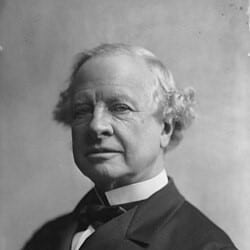We could be discussing the history of Gilchrist House today, were it not for a change of name in 1884.
Gilchrist House opened in 1883 and was named after Dr John Borthwick Gilchrist. Upon his death in 1841, his will established the Gilchrist Educational Trust. For many years, the Trust sponsored scholarships for students from India, Canada and Australia to study in Britain. It also provided scholarships and fellowships for women at Oxford and Cambridge; travelling studentships for secondary-school teachers; an annual series of public lectures and grants to the Workers’ Educational Association and for university extension courses.
The house was swiftly renamed Granville House
In 1883, the Gilchrist Scholarship was established at Epsom College, and a boarding house was named in his honour. However, recipients of the scholarship were required to attend London University upon leaving Epsom College. Within that first year, a scholarship holder chose to attend Cambridge instead, leading the Gilchrist Trust to withdraw its involvement.
Consequently, the house was swiftly renamed Granville House, in honour of Earl Granville, President of the College at the time. The house was given the Granville family crest: a chapeau or cap, with an ermine lining, historically worn on a helmet before battle, as well as the Granville family motto Frangas non flectes ( “You may break (me), but you will not bend (me)”), symbolising resilience and steadfastness in adversity.
One of the most prominent political figures
Granville George Leveson-Gower, 2nd Earl Granville, became President of Epsom College in 1865 and remained in the role until his death in 1891. A distinguished figure, he served three times as Foreign Secretary and was a close ally of Prime Minister William Gladstone. As a Cabinet member in successive Liberal ministries from the 1830s onwards, Granville was one of the most prominent political figures of his time.
Granville’s first tenure as Foreign Secretary lasted less than three months, yet he was significant enough to be asked by Queen Victoria to draft a memorandum on foreign policy principles. In this document, he emphasised tact and discretion in international affairs, contrasting with the more aggressive approach of Lord Palmerston. He advocated for a balanced strategy – neither excessive intervention in foreign states nor neglect in British interests.
Granville’s leadership was often criticised
Despite his experience, Granville’s leadership was often criticised. His inconsistent policies became the subject of political gossip. He was constrained by Gladstone’s strong views on foreign policy, and struggled to adapt to the shifting European political landscape following the Franco-Prussian War. As nationalist competition and colonial ambitions grew, his approach was perceived as weak and lacking urgency.
In 1840, Granville married Lady Acton (Marie Louise Pelline de Dalberg), who died in 1860. By 1864, he was engaged to Rose O’Neal Greenhow, an envoy and former spy from the Confederate States of America. However, she drowned off Wilmington, North Carolina, while attempting to return to the Confederacy. In1865, Granville married his second wife, Castilia Rosalind Campbell, and together they raised a large family.
Granville’s political career had waned
By 1885, Granville’s political career had waned. When Gladstone briefly returned to power in 1886, Granville was offered only the Colonial Office, a position widely seen as a demotion. After declining this post, Granville effectively retired from political life. He remained a respected elder statesman but played no significant part in public affairs during his final years.
Granville spent his remaining years focusing on personal and family life. He passed away in London, on 31st March 1891, at the age of 75. His death marked the end of a long political career that had once placed him at the centre of British diplomacy.





